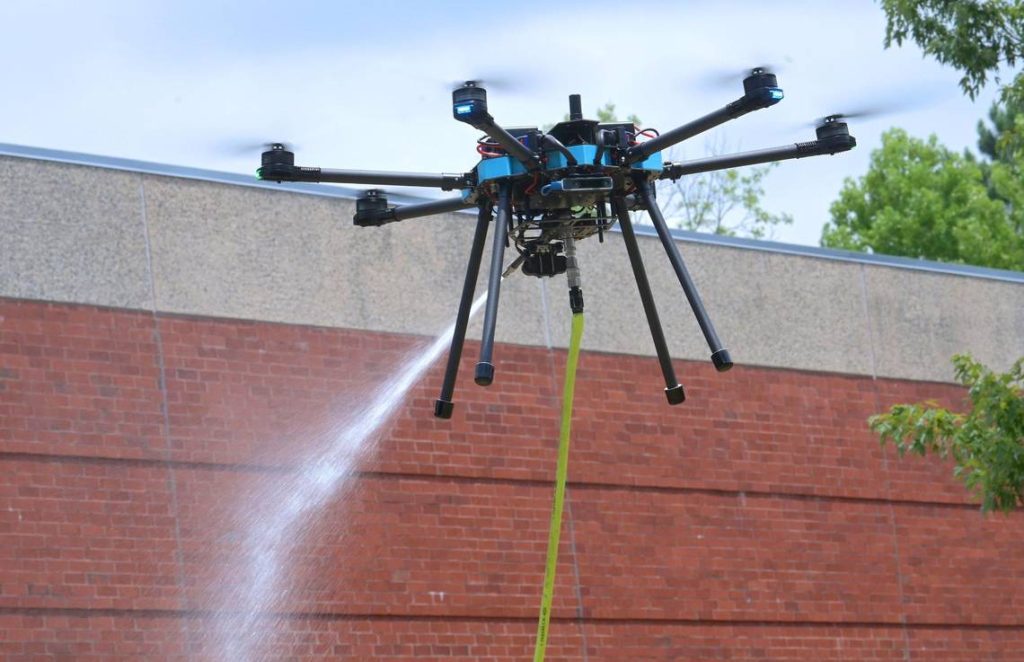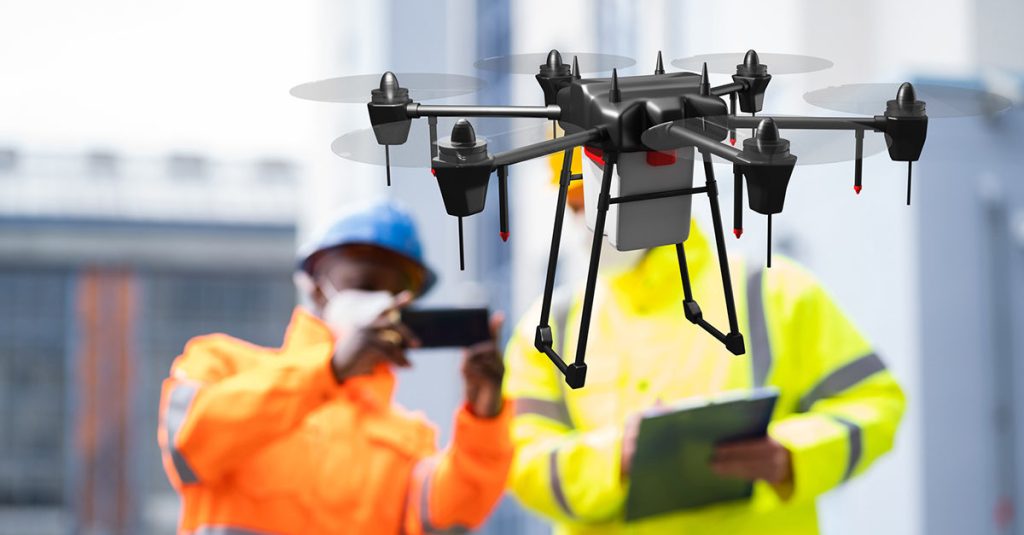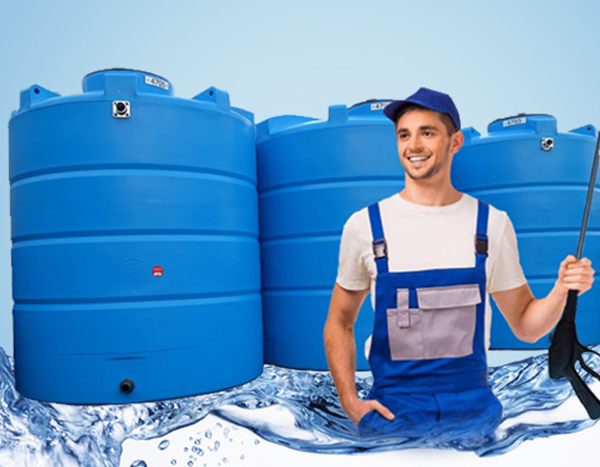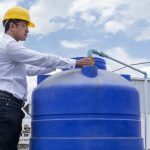Introduction
Water is the elixir of life, and its purity is paramount for the well-being of humans and the environment. Water tanks Cleaning, integral to our water distribution systems, require regular cleaning to maintain the quality of the water they store. As technology advances, so does our ability to tackle challenges like water tank cleaning more efficiently and effectively. In this article, we delve into some of the innovative technologies that are transforming the water tank cleaning landscape.
1. Remote Monitoring and Robotic Cleaning
In the past, cleaning water tanks often meant physical entry into confined spaces, posing risks to workers and time-consuming processes. Today, remote monitoring and robotic cleaning systems have revolutionized this practice. Sensors placed within tanks can collect data on water quality, sediment levels, and microbial growth. Armed with this information, robotic devices equipped with brushes, vacuum systems, and even cameras can be remotely operated to clean the tank interiors without the need for human entry.

2. Water Tank Cleaning with Hydro Jetting
Hydro jetting employs high-pressure water jets to dislodge sediment, algae, and debris from tank surfaces. This technology is highly efficient in removing tough deposits that accumulate over time. The force of the water can be adjusted according to the specific requirements of each tank, making it a versatile cleaning method suitable for various tank sizes and materials.
3. Ultrasonic Cleaning
Ultrasonic technology involves the use of high-frequency sound waves to create microscopic bubbles in the water. These bubbles implode near the tank’s surfaces, creating a scrubbing effect that loosens and removes contaminants. Ultrasonic cleaning is particularly effective for removing biofilms, which can be challenging to eliminate using traditional methods.
4. Air Driven Cleaning Systems
Air driven cleaning systems introduce bursts of compressed air into the tank, creating turbulence that helps dislodge sediment and other particles. This method is environmentally friendly and efficient, as it requires minimal water usage compared to traditional cleaning methods.
5. Nanotechnology
Nanotechnology is making its mark in various fields, and water tank cleaning is no exception. Nanoparticles, when introduced into the water during the cleaning process, can help break down contaminants at the molecular level. This technology enhances the cleaning efficiency while reducing the need for harsh chemicals.
6. Self-Cleaning Tanks
The concept of self-cleaning tanks integrates various technologies to maintain water quality automatically. This includes the use of sensors to monitor water conditions, integrated cleaning mechanisms like sprayers or brushes, and remote control systems. These tanks can trigger cleaning cycles when sediment levels reach a certain threshold, ensuring consistent water quality without manual intervention.
7. Vacuum Systems
Vacuum systems are designed to remove sediment and debris from the tank’s bottom without the need for draining the entire tank. Specialized vacuum devices can suck up sediment and particulates, leaving the tank’s interior clean without the extensive downtime associated with emptying and refilling water tank cleaning.
8. Bioremediation
Bioremediation involves introducing naturally occurring microorganisms into the tank to break down contaminants. These microorganisms consume organic matter, reducing sediment buildup and eliminating the conditions that support the growth of harmful bacteria and algae.
Innovative technologies are reshaping the landscape of water tank cleaning. These advancements not only make the process more efficient and effective but also enhance safety and environmental sustainability. As we continue to confront global water challenges, these technologies provide hope for maintaining the purity of our water resources, ensuring that the water we drink and use remains crystal clear and safe for generations to come.
The quest for clean water is an ongoing endeavor, and maintaining the purity of our water supply demands innovative solutions. Water tanks, vital components of water distribution systems, require regular cleaning to prevent contamination and ensure the quality of water. The integration of cutting-edge technologies has brought forth a new era in water tank cleaning. In this article, we explore how innovative technologies are transforming the landscape of water tank cleaning, paving the way for more efficient and effective practices.
9. Nano coatings for Prevention
Nano coatings, ultrathin protective layers with nanoparticles, are being developed to prevent contaminants from adhering to tank surfaces. These coatings repel dirt, sediment, and even microbial growth, reducing the frequency of manual cleaning. The self-cleaning properties of nanocoating offer a sustainable solution to maintaining water tank Cleaning hygiene.
10. Drones for Inspection and Cleaning
Unmanned aerial vehicles, or drones, equipped with high-resolution cameras and sensors, are now being employed for water tank inspection. Drones can quickly and accurately assess the condition of tanks, identifying areas of concern without the need for manual inspection. Moreover, specialized cleaning drones are being developed to reach remote or challenging tank locations, making the cleaning process more accessible and efficient.

11. IoT-Enabled Monitoring Systems
Internet of Things (IoT) technology is transforming how we monitor and manage water tanks. IoT-enabled sensors can provide real-time data on water quality, temperature, sediment levels, and more. This data-driven approach allows for proactive cleaning scheduling, optimizing resources and minimizing downtime.
12. UV-C Disinfection
Ultraviolet-C (UV-C) light is a powerful disinfection tool that destroys bacteria, viruses, and pathogens. UV-C systems integrated into water tanks can disinfect the water while it’s stored, preventing microbial growth and reducing the need for chemical additives in water tank cleaning.
13. Plasma Cleaning
Plasma cleaning technology utilizes ionized gas to generate reactive species that break down contaminants on surfaces. Plasma systems can efficiently clean tank interiors without the need for manual scrubbing, making the process faster and less resource-intensive.
14. AI and Machine Learning
Artificial intelligence (AI) and machine learning algorithms are being employed to predict the optimal times for water tank cleaning. By analyzing historical data and real-time factors such as weather conditions and water usage patterns, these algorithms can recommend when cleaning is most needed, reducing unnecessary cleanings and optimizing maintenance schedules.
15. Bio-Based Cleaning Agents
Traditional cleaning agents can have environmental and health implications. Bio-based cleaning agents, derived from natural sources, offer a more sustainable alternative. These agents are effective in removing contaminants without introducing harmful chemicals into the water tank cleaning supply.
16. Solar-Powered Cleaning Systems
Solar-powered cleaning systems use renewable energy to operate mechanical cleaning mechanisms within tanks. These systems can agitate water and dislodge sediment, keeping the tank interiors cleaner without relying on external power sources.
17. Augmented Reality (AR) for Training
AR technology is being used for training water tank cleaning professionals. Through interactive simulations, trainees can practice cleaning procedures in a virtual environment, gaining practical experience before applying their skills in real-life scenarios.
The fusion of innovation and water tank cleaning has opened new avenues to ensure the purity of our water supply. These technologies not only enhance efficiency but also elevate safety, sustainability, and accessibility. As the demand for clean water continues to grow, these advancements offer hope for maintaining water quality and ensuring the well-being of individuals and communities. By embracing these innovative solutions, we contribute to a future where clean water remains a cornerstone of life and prosperity.
In the pursuit of clean and safe water, the role of technology cannot be underestimated. Water tanks, which store and distribute water to our homes and businesses, play a crucial role in maintaining water quality. With advancements in technology, we now have innovative solutions that are revolutionizing the way we clean and maintain these tanks. In this article, we delve deeper into the realm of innovative technologies that are making water tank cleaning more efficient and effective than ever before.
18. Real-Time Monitoring and Predictive Analytics
Real-time monitoring systems equipped with sensors and data analytics enable continuous tracking of water quality and tank conditions. These systems provide instant alerts when contamination or irregularities are detected, allowing for swift corrective action in Water tank cleaning. Moreover, predictive analytics use historical data and patterns to forecast when tanks might require cleaning, optimizing maintenance schedules and resource allocation.

19. Electrochemical Water Tank Cleaning
Electrochemical cleaning involves using low-voltage electric currents to generate oxidants that break down organic matter, bacteria, and biofilms on tank surfaces. This non-invasive technology eliminates the need for scrubbing or harsh chemicals, making it environmentally friendly and highly efficient.
20. Biodegradable Cleaning Agents
To address concerns about the environmental impact of cleaning agents, biodegradable formulations are gaining traction. These agents break down naturally over time, reducing the risk of introducing harmful substances into the water supply while effectively removing contaminants.
21. Magnetic Field Cleaning
Magnetic field technology utilizes electromagnetic waves to agitate water molecules, creating turbulence that dislodges sediment and contaminants from tank surfaces. This gentle yet effective method reduces the need for manual scrubbing and conserves water by minimizing the flush-out process.
22. Hydrophobic Coatings
Hydrophobic coatings create a water-repellent surface that prevents contaminants from adhering to tank walls. These coatings also hinder the growth of algae and biofilms, making them an eco-friendly solution for maintaining water quality over time.
23. Automated Cleaning Systems
Automated cleaning systems, equipped with rotating brushes, high-pressure jets, and vacuum mechanisms, can thoroughly clean tank interiors without human intervention. These systems can be programmed to navigate the tank’s contours, ensuring a comprehensive cleaning process.
24. Collaborative Robots (Cobots)
Collaborative robots, or cobots, are designed to work alongside humans. In water tank cleaning, cobots can assist with tasks such as scrubbing and disinfecting, reducing the physical strain on workers while enhancing the efficiency of the cleaning process.
25. Block chain for Transparency
Block chain technology is being explored to enhance transparency in water tank maintenance. By recording each cleaning event on a secure and immutable ledger, stakeholders can track and verify the cleaning history of tanks, ensuring accountability and compliance with cleaning standards.
26. Aerators and Mixers
Aerators and mixers create turbulence within the tank, preventing sediment from settling and promoting uniform distribution of disinfectants. These devices enhance water quality and reduce the need for frequent cleaning.
The quest for innovative solutions to water tank cleaning reflects our commitment to preserving water purity. As technology evolves, so does our ability to maintain clean water storage systems efficiently and sustainably. These cutting-edge technologies not only streamline the cleaning process but also contribute to environmental conservation and public health. By embracing these advancements, we take a significant step towards ensuring that the water flowing from our taps remains crystal clear, safe, and a source of life for generations to come.
Cleaning Water Tanks: Ensuring Purity and Safety
Water, the essence of life, is a resource that we rely upon for sustenance and well-being. As water travels from its source to our taps, it encounters various stages of treatment and distribution. Among these crucial stages is water storage in tanks, which serve as reservoirs before reaching our homes, schools, and businesses. Ensuring the cleanliness of these tanks is essential for maintaining water quality and safeguarding public health. In this article, we explore the significance of cleaning water tanks and provide insights into effective cleaning practices.
The Role of Water Tanks
Water tanks are integral components of water supply systems, playing a vital role in storing and delivering water to meet our daily needs. They collect water from diverse sources, such as rainfall or municipal supplies, before it is distributed for drinking, cooking, hygiene, and various industrial applications. However, over time, these tanks can accumulate sediment, debris, and microbial contaminants that compromise the quality of the stored water.
The Importance of Regular Water Tank Cleaning
- Health Protection: The primary reason for regular water tank cleaning is to protect public health. Contaminated water poses a significant risk of waterborne diseases, affecting people of all ages. Harmful bacteria, viruses, and pathogens can multiply rapidly in stagnant water, making regular cleaning a critical preventive measure.
- Water Quality: Clean water isn’t solely about being free from visible impurities; it’s about maintaining the taste, smell, and color that make water palatable and inviting. Regular cleaning ensures that the aesthetic qualities of water are preserved, encouraging its consumption.
- Preventing Biofilm Formation: Biofilms, slimy communities of microorganisms that adhere to surfaces, can form within water tanks. These biofilms protect bacteria and other pathogens, making them challenging to eliminate. Regular cleaning disrupts biofilm formation, reducing the risk of contamination.
- Infrastructure Longevity: Sediment accumulation at the bottom of tanks can lead to corrosion and deterioration. Regular cleaning helps extend the life of tanks, preventing leaks and structural damage.
Steps for Effective Water Tank Cleaning
- Draining: Begin the cleaning process by completely draining the tank. This involves turning off the water supply and opening the tank’s drainage valve to allow water to flow out.
- Scrubbing and Disinfecting: Once the tank is empty, scrub the interior walls and floor using a brush and a mild detergent. For disinfection, use a chlorine bleach solution to eliminate bacteria and pathogens. Ensure proper ventilation when working with bleach.
- Rinsing: Thoroughly rinse the tank with clean water to remove any residual cleaning agents or disinfectants.
- Removing Sediment: Any remaining sediment can be removed using a wet-dry vacuum or by manually scooping it out.
- Refilling: After cleaning, refill the tank with clean, treated water. Follow local guidelines for water treatment, especially if the water will be used for drinking or cooking.
Frequency of Cleaning
The frequency of water tank cleaning depends on factors such as tank size, water source, and water usage. Generally, residential tanks should be cleaned at least once or twice a year, while commercial or industrial tanks might require more frequent cleaning due to higher usage.
Professional vs. DIY Cleaning
While DIY cleaning is possible, it may not always be sufficient to ensure thorough cleaning, especially in larger or complex tanks. Professional water tank cleaning services utilize specialized equipment, tools, and expertise to reach all areas of the tank, ensuring a comprehensive cleaning process.
Community Involvement and Awareness
Raising awareness about the importance of water tank cleaning is crucial. Communities, local authorities, and health organizations can collaborate to educate individuals about proper cleaning practices, share guidelines, and conduct workshops.
Conclusion
Water tank cleaning is a responsibility that cannot be overlooked. It’s a key step in maintaining the purity of our water supply and ensuring the health and well-being of individuals and communities. By adhering to regular cleaning practices, we contribute to a safer, cleaner, and more sustainable water future for all. Clean water isn’t just a necessity; it’s a fundamental right that must be upheld through diligent maintenance and commitment to cleanliness.









